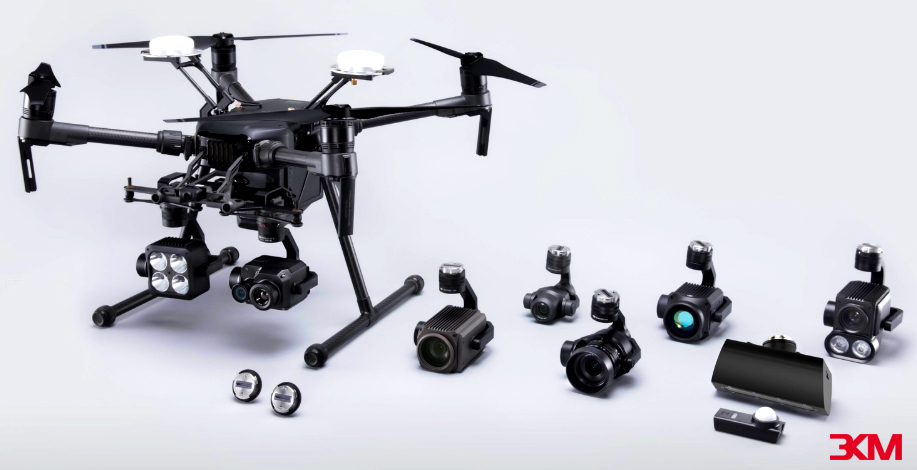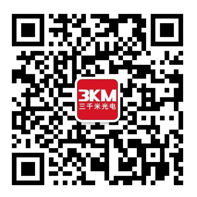Infrared laser light for night vision monitoring of DJI UAV weighing 60g and 500m

Infrared laser light for night vision monitoring of DJI unmanned aerial vehicles weighing 60g and 500m
——Breaking through the Two Technical Difficulties of Load and Energy Consumption in High Definition Night Vision Monitoring and Lighting of Drones
With the increasing application of drones, the use of drone aerial photography has also entered the daily life of ordinary families. Its popularity is due to the low cost of using drone aerial photography compared to helicopter aerial photography, and aerial photography personnel can control drones to complete the shooting by standing on the ground through a remote control. Not only is the operation simple, but there is no need for aerial photography personnel to work in the air, increasing the safety factor of the shooting process.
However, during aerial photography by drones at night, due to insufficient lighting, the aerial photography effect is not ideal and the captured images are not clear. In order for the drone to shoot normally, an illumination device is also needed to increase the illumination level during aerial photography. In the past, array infrared LEDs, searchlights, and multiplier night vision devices were commonly used as auxiliary light sources in unmanned aerial vehicle night photography auxiliary lighting technology. However, the method of using array infrared LEDs, searchlights, and multiplier night vision devices as auxiliary light sources has problems such as high power consumption, non concealment, large weight, unclear video image hierarchy, and insufficient clarity, and the cost of night vision devices is too high.
Professional level drones in the market are usually paired with mature security night vision lighting cameras equipped with infrared thermal imagers, LED infrared lighting, infrared laser night vision lighting, or white light laser lighting, enabling drone night vision monitoring to achieve high-definition reconnaissance and rapid search work at night, greatly improving the application level of drones. However, these types of night vision lighting technologies have their own advantages and disadvantages in the application of drones, as well as their respective specialized fields:
1. The advantage of infrared thermal imaging night vision monitoring is its effective distance, which can detect objects within a few kilometers. But there are also drawbacks such as low clarity of imaging images, low image resolution, large weight, and expensive prices. It is mainly used in police law enforcement, border and coastal defense, forest fire prevention, animal protection, and other fields.
2. The advantages of LED infrared night vision lighting are low cost, light weight, and low power consumption. But the effective distance is too close, and the best distance is within a range of 30 meters, with a maximum distance of only about 50 meters; The illumination angle of LED infrared lights is large and the red explosion phenomenon is obvious, with poor concealment. Therefore, it is suitable for consumer level drones and ordinary drone night vision monitoring environments.
3. The advantages of infrared laser night vision lighting are long distance, effective range from a few hundred meters to a few kilometers, high monitoring image clarity, high-definition and delicate image quality, lower power consumption than LED infrared lighting, and the weight of zoom infrared laser lights is heavier than LED infrared lighting, but they are much lighter than infrared thermal imaging, and the price is also much cheaper. The wavelength selection range of laser light sources is wide, and different wavelengths of infrared laser lights can be selected according to different needs, For example, stealth, breathable rain and haze performance, etc. It is obvious that infrared laser night vision lighting has significant advantages in terms of application, monitoring effectiveness, and cost in unmanned aerial vehicle monitoring. It is often used in military and police unmanned aerial vehicle monitoring and shooting, professional level unmanned aerial vehicle night vision monitoring, and fever level unmanned aerial vehicle night vision shooting.
4. The application field of white light laser lighting is significantly different from the previous three. Its function is to replace bulky high-power searchlights and achieve full color photography at night. It is mainly used in professional fields with visible light lighting requirements such as strong light search and rescue lighting at night and full color monitoring and shooting at night. White light laser lighting usually uses high-power lasers as light sources, so its weight is generally heavier than commonly used infrared laser night vision lighting. Currently, professional white light laser lighting is few in the market from manufacturers, and the price is not cheap.
In terms of the application characteristics of drones, weight bearing and energy consumption are two major technical issues that cannot be avoided. The endurance, takeoff weight bearing capacity, handling flexibility, and smoothness of drones are the four main factors in the application of drone surveillance cameras. The key point closely related to these factors is the weight and power consumption of the equipment loaded by the drone. The lighter the equipment weight, the more advantageous it is for the drone's endurance, reduced load, and flexibility; The lower the power consumption of the device, the longer the range of the drone.
Although infrared laser lighting with numerous advantages is the first choice for compensating light in unmanned aerial vehicle night vision monitoring cameras, there are various types of infrared laser lights on the market. The weight of infrared laser lights with effective distances of several hundred meters is about 230g-500g, and the total power consumption of laser lights is about 10-20W. Different types of infrared laser lights have vastly different effects, and there is no infrared laser light specifically designed for unmanned aerial vehicle night vision monitoring. To this end, at the end of 2016, the technical team of the drone industry giant DJI Innovation Technology visited several infrared laser lamp manufacturers in the infrared laser lighting industry with a series of market demands such as light weight, low power consumption, small size, good flexibility, and industrial grade temperature range.
Finally, it was decided to collaborate with 3KM Optoelectronics to conduct secondary development on the basis of its independently developed VCSEL infrared laser lamp. In early 2017, a zoom infrared laser lamp with a weight of only 60g and an effective distance of up to 500 meters was successfully developed, specifically for night vision monitoring and camera lighting of drones. This greatly reduced the weight of drones and became the lightest long-distance zoom infrared laser lamp in the industry.
The reason for using VCSEL infrared laser lamps instead of edge emitting infrared laser lamps for development is firstly because its operating temperature range is from -40 ℃ to+85 ℃, which can not only adapt to huge temperature differences in different outdoor environments and seasons, but also has low thermal redundancy. The temperature during normal operation is only about 5 ℃ higher than the ambient temperature, and the sensitivity of VCSEL lasers to temperature is 0.06nm/℃, Far lower than the 0.3nm/℃ of edge emitting lasers, the optical power is less affected by temperature. Therefore, natural air cooling can ensure that the laser lamp is within its normal operating range. The working temperature range of traditional edge emitting infrared laser lamps is between -20 ℃ and+60 ℃. The edge emitting laser has high thermal redundancy and high sensitivity to temperature. It must be equipped with specialized laser heat dissipation and cooling modules, and even preheating modules are required when used in extremely low temperature environments in winter.
Secondly, due to the wide operating temperature range of VCSEL infrared laser lamps and their ability to maintain normal operation in natural air-cooled conditions, their heat dissipation structure has been simplified and cooling modules have been reduced when applied on drones, resulting in smaller volume and lighter weight.
Furthermore, the unique microlens (i.e. 3KM AOT) laser homogenization technology of VCSEL infrared laser lamps is completely different from the laser homogenization technology used in traditional edge emitting infrared laser lamps by rotating ground glass. It does not require a homogenization motor and is a vibration free, jitter free, and light loss free excitation homogenization technology, which not only reduces weight but also saves space required for the laser homogenization module, It also avoids the vibration caused by the continuous rotation of the motor, which affects the stability of drone surveillance cameras (especially when the laser homogenization motor and air-cooled motor are not on the same axis, the vibration amplitude generated when both motors rotate simultaneously will be greater, and the stability of drone cameras will also be greater), ensuring the achievement of high-definition camera images.
Finally, in terms of energy conservation, due to the use of lossless homogenization technology in VCSEL infrared laser lamps, the power consumption of the laser is about 20% lower than that of edge emitting lasers, and the removal of cooling and homogenizing motors makes the overall power consumption of the laser fill lamp lower.
The original intention of the development of VCSEL infrared laser light is because it has high laser safety, breaking the curse that long-distance infrared laser fill lights have not been able to achieve Class 3B laser safety level. In less than half a year of market launch, it can achieve significant breakthroughs in two major technical issues in the field of unmanned aerial vehicle night vision monitoring and camera application, which is not only a coincidence, but also a symbol of the two companies' pursuit of excellence and continuous innovation.
